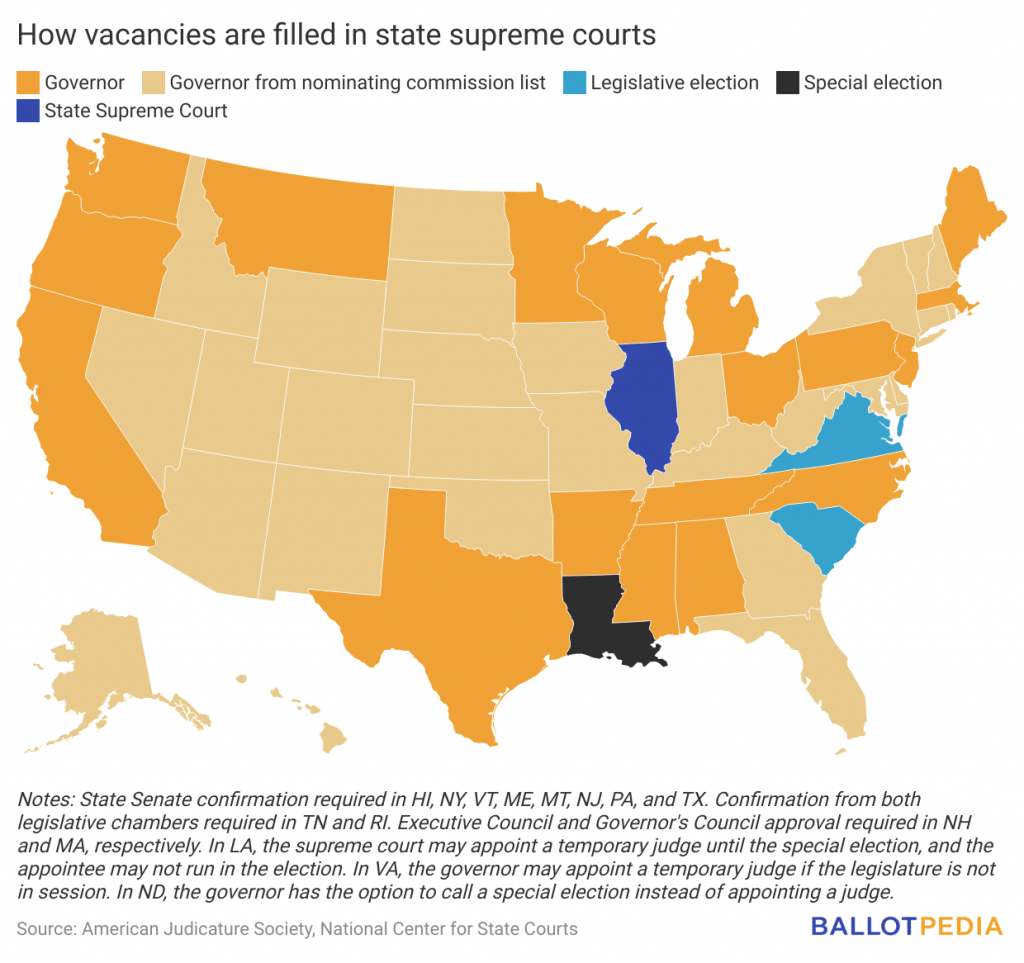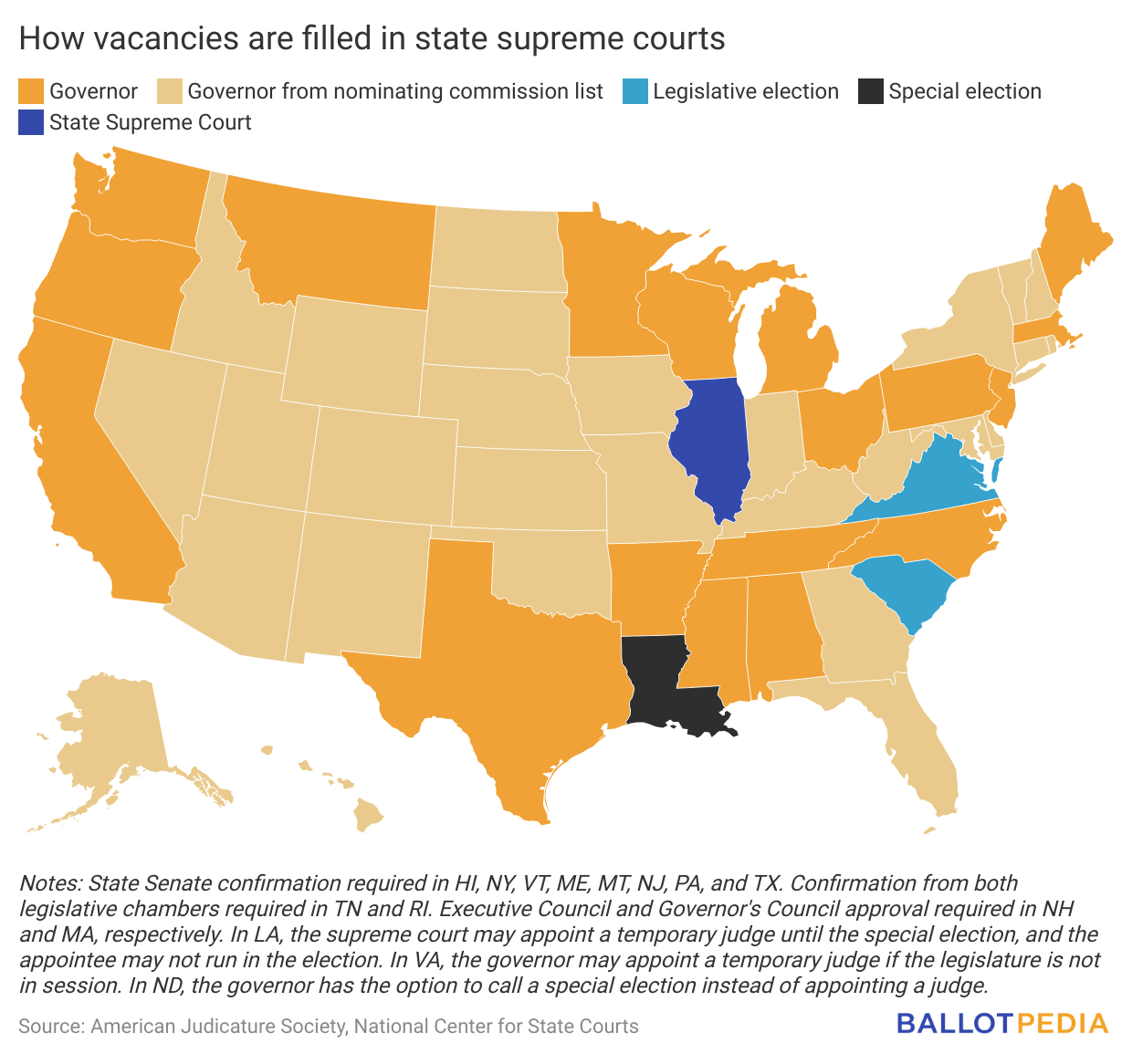The most common reasons for a vacancy on a state supreme court include reaching the mandatory retirement age, retiring before the end of a term, death, or appointment to another office. The process for filling vacancies on state supreme courts varies among states. In most states, the governor appointments a replacement justice, either outright or with assistance from a nominating commission. There are five primary methods used:
- Eighteen states fill vacancies on the state supreme court through direct gubernatorial appointment.
- Twenty-eight states fill vacancies through a gubernatorial appointment with assistance from a nominating commission.
- Two states (South Carolina and Virginia) fill vacancies through legislative appointments.
- In Illinois, the state supreme court nominates a replacement justice.
- In Louisiana, voters elect a replacement in a special election.
The methods that courts use to fill vacancies do not necessarily line up with how they regularly select judges. For example, only one state uses elections to fill vacancies, while 20 states use them to regularly select judges.



